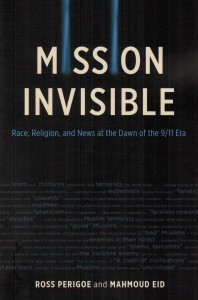9/11 was an inglorious episode for journalism. The reaction to extraordinary events ran the gamut from A to B: anxiety and bravura. When commentators weren’t beating the drum for war, they were cringing every time the floorboards squeaked. Consider the scare that started with an insect bite.
On October 15, 2001 Nancy Rochon, a Parliament Hill employee, went to a nursing station for calamine lotion. Rochon had been gardening and developed a rash on her hands after she was bitten by a ladybug.
A Senate security guard happened by. Had Nancy opened mail recently? Why yes, she replied; Rochon worked in the Journals Branch and opened mail all the time. Mail – hands – rash — anthrax!
Alerted by the ravings of the Senate guard, police sealed Parliament Hill and MPs were told a mysterious white powder was found in an envelope. Media went berserk. “Could you ever imagine having potential death mailed to you? It’s unimaginable!” said CTV Canada AM host Rod Black.
The Globe & Mail headline read, ANTHRAX FEAR GRIPS OTTAWA. There were false anthrax reports in Vancouver, Edmonton, Toronto and Ottawa’s Rockcliffe Park, where police were summoned over a mysterious “white substance” found near the Israeli ambassador’s home. It turned out to be seagull droppings.
Mission Invisible authors Mahmoud Eid and the late Ross Perigoe set out to document the Big Scare with the kind of scalpel-like precision discarded by media in the 9/11 era. They selected one stream of coverage in one town over one month. Their target was the Montreal Gazette, a venerable daily serving sophisticated urban readers. The findings are unsettling.
Within four hours of the World Trade Center collapse, the Gazette rushed a 16-page special edition to press. WAR ON AMERICA, it read. It was all downhill from there. “From that day on, then, war was portrayed as inevitable and acceptable,” the authors write; “This lack of contextualization produced a sense of inexplicability of the actions of Muslims”.
Eid is a professor of journalism at the University of Ottawa; Perigoe taught journalism at Concordia University till his death from cancer in 2012. Both ask questions that reporters and editors failed to ask at the Gazette.
How many people died in 9/11? “More than 5000,” the Gazette told readers on September 15. Within a week the toll was elevated to “more than 6000”; then “more than 7000”. The figures were never attributed. The actual death count was 2992.
Who was to blame for 9/11? “Barbarians”, said the Gazette; the noun appeared five times. “Fanatics” was used 32 times; “cowards” 17 times. It was bloodcurdling commentary but not actual reportage. “In their effort to ‘fill in the blanks’ for readers, the Gazette’s journalists presented their own opinions,” authors conclude; “Nowhere in the twenty days of our study period was there a review of the countries in which Islam is the majority religion, nor was there any indication of how many Muslims live in Canada.”
Instead the Gazette reverted to confusing commentary that ranks among the most unfortunate articles ever published in that daily. At the very moment when accuracy and coolness mattered, Gazette staff began panting.
When false suspicions grew that 9/11 suspects traveled through Canada, columnist Brian Kappler wrote that “every escaped killer, Triad gang lord, terror-mastermind, fugitive con-man and ‘snakehead’ people-smuggler around the globe knows full well what a soft touch Canada is.” When calm voices appealed for some thoughtful response to 9/11, Gazette editor Peter Stockland ridiculed the “bromides of chrome-domed York University professors.”
When the dust settled at the World Trade Centre, commentator Elizabeth Bromstein advised readers it was normal to be frightened of non-Caucasians: “I am in the Place des Arts metro station. I see three men, one of them wearing a turban. I start to shake. I want to get out of the station but force myself to get on the train. For the entire ride, images of being trapped in the tunnel after an explosion keep popping into my head.”
As Eid and Perigoe put it, “Some journalists appeared fearful in their writings. Using the newspaper as a platform to express their own fear and confusion might have been cathartic for them, but doing so might have also heightened the sense of fear among readers.”
If 9/11 was a test of a newsroom’s character under stress the Gazette failed along with so many others. The daily did not win any National Newspaper Awards that year. No staff were reprimanded for their coverage.
By Holly Doan
Mission Invisible: Race, Religion and News At The Dawn Of The 9/11 Era, by Ross Perigoe and Mahmoud Eid; University of British Columbia Press; 332 pages; ISBN 9780-7748-26488






